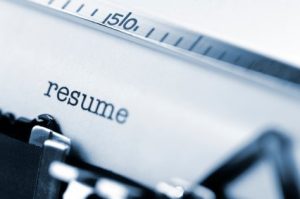Submitted by CCCL_DouglasT
The word résumé is simply French for “summary.” The earliest résumés were probably just that. In his letter to Ludovico Sforza, Duke of Milan, Leonardo Da Vinci sought employment by laying out the following:
- What he was seeking (Objective)
- Who he had studied with (Education)
- A list of his skills pertinent to the Duke’s needs (Skills)
- How they related to his needs, and what might be accomplished if hired (Cover Letter)
This format is still relevant today.
 Summarize
Summarize
The most important thing to remember about a resume is that it is a summary. If you are seeking a non-management/non-academic position, any resume over 2 pages is probably going to get thrown out. If you are writing your first or second resume, this article by Marisa Hoheb is great, especially for teens and young 20-somethings. If you are further along in your career Diane Stafford has great advice here. Your second concern is that it must stand out and contain words which will not be lost upon first line human, or AI (artificial intelligence) readers. Jargon is dead—concise, powerful words rule.
Keywords and Action Verbs
Keywords (in my day power or action verbs) are what get you noticed. Sara Afzal’s concise article on resume language will get you through the basics. For a more detailed account of finding and using keywords to tailor your resume for each employer, follow the advice of one of the largest job boards (Indeed) in the world.
Bias-proofing
Another step to developing your résumé is to anonymize, or bias-proof. What’s this? It’s a way to remove information that could be used by readers to discriminate. The most common biases are gender, race, and age. And though it is a sad statement on our society, it is best to bias-proof your résumé. Glassdoor.com provides an excellent set of steps to remove age from a resume. Bureau of Labor Statistics also reports that more people over 55 are working, but there has been a shift in occupation: Management, Sales, and self-employment are the big gainers. These are fields where experience and knowledge are valued. Make sure to look there!
Gender bias is more difficult to anonymize. I recommend reading the Ziprecruiter.com article on gender-neutral job descriptions and try to incorporate the ideas put forth in the samples provided.
Race bias can be even more insidious. Many tests have been done on recruiters using names commonly associated with various ethnic/cultural populations and find that they receive fewer interviews. In the USA, including headshots has been out of style for decades, and be suspicious (unless of course this is a modelling agency, where images are required) of any organization requesting one.
Step-by-Step
And finally, if you have not used LinkedIn Learning for libraries, now is the time to try. The course, “Writing a Resume” with Stacey Gordon is an excellent use of your time.



Add a comment to: Find a Job: The Resume